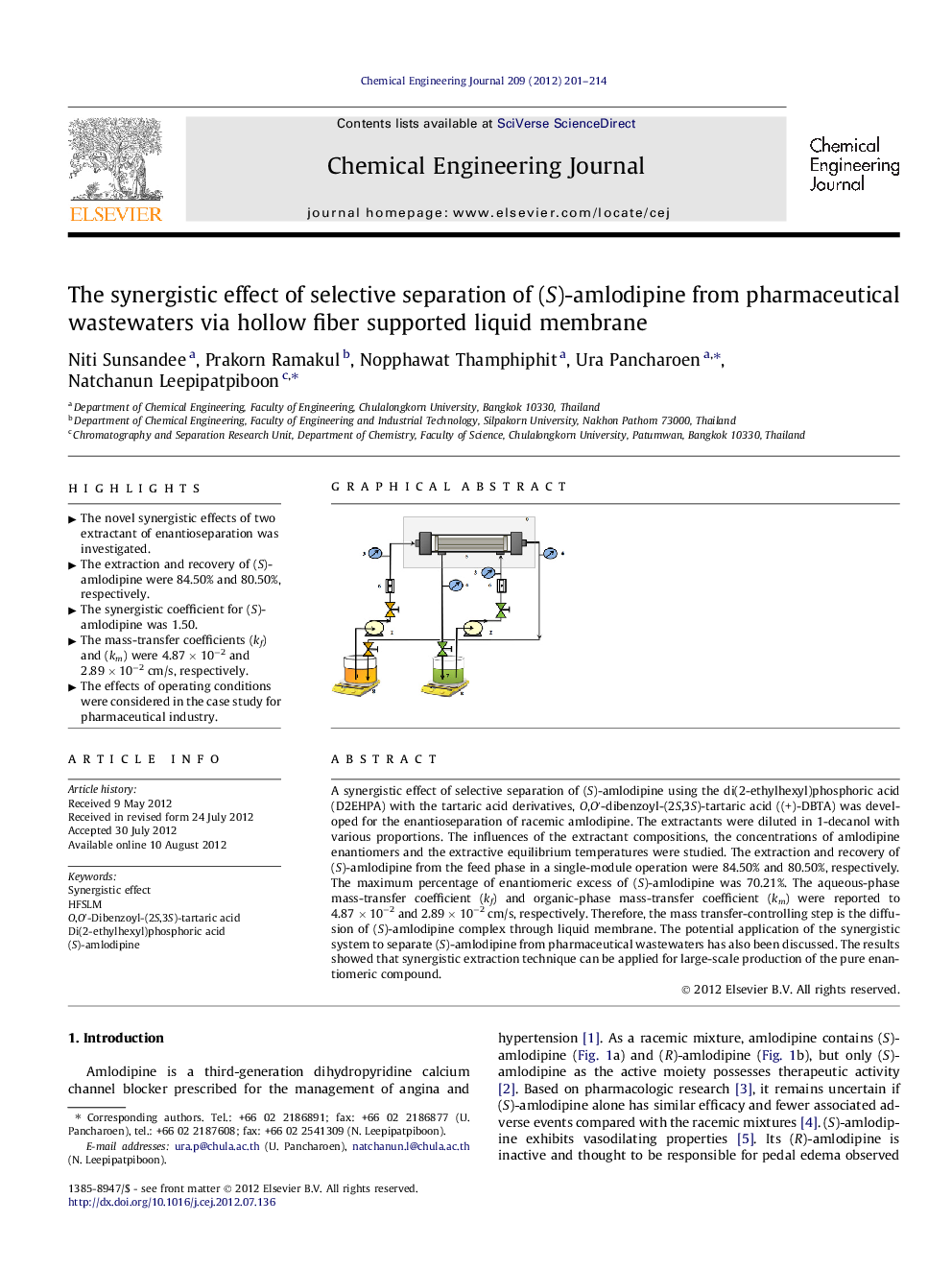| کد مقاله | کد نشریه | سال انتشار | مقاله انگلیسی | نسخه تمام متن |
|---|---|---|---|---|
| 149239 | 456429 | 2012 | 14 صفحه PDF | دانلود رایگان |

A synergistic effect of selective separation of (S)-amlodipine using the di(2-ethylhexyl)phosphoric acid (D2EHPA) with the tartaric acid derivatives, O,O′-dibenzoyl-(2S,3S)-tartaric acid ((+)-DBTA) was developed for the enantioseparation of racemic amlodipine. The extractants were diluted in 1-decanol with various proportions. The influences of the extractant compositions, the concentrations of amlodipine enantiomers and the extractive equilibrium temperatures were studied. The extraction and recovery of (S)-amlodipine from the feed phase in a single-module operation were 84.50% and 80.50%, respectively. The maximum percentage of enantiomeric excess of (S)-amlodipine was 70.21%. The aqueous-phase mass-transfer coefficient (kf) and organic-phase mass-transfer coefficient (km) were reported to 4.87 × 10−2 and 2.89 × 10−2 cm/s, respectively. Therefore, the mass transfer-controlling step is the diffusion of (S)-amlodipine complex through liquid membrane. The potential application of the synergistic system to separate (S)-amlodipine from pharmaceutical wastewaters has also been discussed. The results showed that synergistic extraction technique can be applied for large-scale production of the pure enantiomeric compound.
Figure optionsDownload as PowerPoint slideResearch highlights
► The novel synergistic effects of two extractant of enantioseparation was investigated.
► The extraction and recovery of (S)-amlodipine were 84.50% and 80.50%, respectively.
► The synergistic coefficient for (S)-amlodipine was 1.50.
► The mass-transfer coefficients (kf) and (km) were 4.87 × 10−2 and 2.89 × 10−2 cm/s, respectively.
► The effects of operating conditions were considered in the case study for pharmaceutical industry.
Journal: Chemical Engineering Journal - Volume 209, 15 October 2012, Pages 201–214